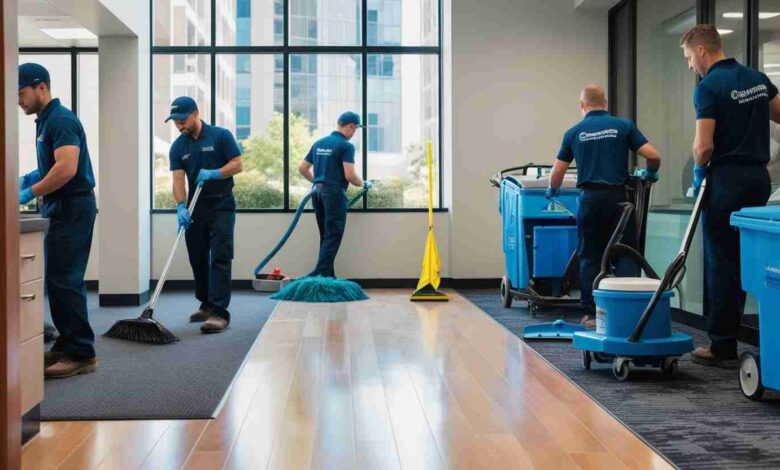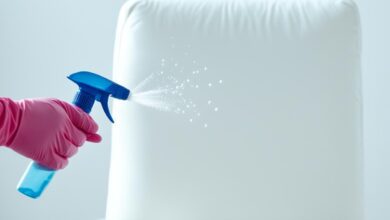
Commercial cleaning is more than wiping down desks or vacuuming floors—it’s a critical component of maintaining a productive and healthy environment. A clean workspace reduces illness, boosts employee morale, and creates a positive impression on clients. This ultimate guide covers all aspects of commercial cleaning, from basic concepts to actionable steps and best practices.
Understanding Commercial Cleaning
Commercial cleaning uses specialized cleaning techniques and products to sanitize and maintain non-residential spaces, such as offices, retail stores, factories, and healthcare facilities. Unlike residential cleaning, which often focuses on aesthetic upkeep, commercial cleaning targets hygiene, safety, and regulatory compliance. With large foot traffic, complex layouts, and equipment use, commercial cleaning requires a tailored approach.
Benefits of Professional Commercial Cleaning
Before delving into techniques, let’s explore the reasons why a commercial cleaning service can be beneficial:
- Health and Safety: Regular cleaning reduces the spread of bacteria, viruses, and allergens. This is essential in workplaces, especially in open offices where illness can spread quickly.
- Increased Productivity: A clean environment can boost employee focus, reduce stress, and create a more pleasant work atmosphere.
- Professional Appearance: Clean spaces leave a good impression on clients, customers, and visitors, contributing to a positive brand image.
- Cost Savings: Routine cleaning can prevent damage to floors, carpets, and equipment, reducing the need for expensive repairs or replacements.
Types of Commercial Cleaning Services
Commercial cleaning services can be customized to meet the unique needs of each business. Some common types include:
- Office Cleaning: Routine cleaning of offices, including desks, bathrooms, kitchens, and communal areas.
- Healthcare Cleaning: Cleaning for medical facilities, with a focus on sanitizing surfaces and handling biohazards to comply with health regulations.
- Industrial Cleaning: Includes factories and warehouses, focusing on dust removal, machinery cleaning, and safety.
- Retail Cleaning: Maintaining store cleanliness to create a positive shopping experience.
- Specialized Cleaning: Includes carpet cleaning, window washing, and deep cleaning services.
The Essential Commercial Cleaning Supplies
A successful cleaning routine requires the right supplies and equipment. Here are some essentials:
- Cleaning Agents: Includes disinfectants, detergents, and glass cleaners. It’s important to use products that are effective against bacteria and viruses, especially for high-touch areas.
- Microfiber Cloths: Microfiber cloths are highly effective at trapping dust and bacteria, making them a better option than regular rags.
- Mops and Buckets: For effective floor cleaning, use a mop with a high-quality microfiber head, which offers better absorption and is more hygienic.
- Vacuum Cleaners: A commercial-grade vacuum with HEPA filters ensures effective dust and allergen removal.
- Protective Gear: Gloves, masks, and sometimes full PPE are necessary for certain environments, like healthcare or industrial spaces.
- Specialized Equipment: In some cases, specialized machines like floor scrubbers, pressure washers, and steam cleaners are required.
Creating a Comprehensive Cleaning Checklist
A well-structured checklist is vital for any commercial cleaning routine. Here’s an example of a basic checklist that can be tailored to different businesses:
- Daily Tasks:
- Empty trash bins and replace liners
- Wipe down high-touch areas (door handles, light switches, elevator buttons)
- Sanitize restrooms (clean sinks, and toilets, restock soap and paper products)
- Vacuum or sweep main traffic areas
- Sanitize shared surfaces, like kitchen counters and conference tables
- Weekly Tasks:
- Clean windows and glass partitions
- Dust furniture and workstations
- Mop floors thoroughly, paying attention to edges and corners
- Deep-clean restrooms, including tiles and grout
- Vacuum upholstery
- Monthly Tasks:
- Polish floors or apply protective coatings if needed
- Clean air vents and ceiling fans
- Deep-clean carpets with a professional-grade carpet cleaner
- Wash walls, especially in high-touch areas
- Disinfect trash cans and recycling bins
- Quarterly/Seasonal Tasks:
- Deep-clean windows and window frames
- Check for mold and mildew in damp areas
- Steam-clean upholstery and high-traffic carpet areas
- Inspect for signs of pest infestations
- Deep-clean air ducts and replace filters
Best Practices for Effective Commercial Cleaning
Adopting best practices ensures a more efficient and thorough cleaning process. Here are some essential tips:
- Use Color-Coded Cloths: Use different colored cloths for different tasks, like blue for glass, yellow for surfaces, and red for restrooms. This reduces cross-contamination.
- Follow Dwell Times: Many disinfectants require a certain amount of contact time to be effective. Follow the instructions on the label to ensure bacteria and viruses are killed.
- Work Top to Bottom: Clean from top to bottom to avoid dust and dirt settling on already cleaned surfaces.
- Prioritize High-Touch Areas: Focus on areas that are frequently touched, as they are more likely to harbor germs.
- Properly Dispose of Waste: Ensure all waste is handled and disposed of according to local regulations, especially if handling hazardous materials.
Green Cleaning in Commercial Spaces
Many businesses are opting for green cleaning methods that minimize environmental impact and promote better indoor air quality. Green cleaning can be achieved by using eco-friendly cleaning agents, energy-efficient equipment, and reducing waste. Here are some strategies:
- Use Eco-Friendly Products: Choose biodegradable, non-toxic products certified by organizations like Green Seal.
- Reduce Water and Chemical Use: High-quality microfiber cloths can reduce the need for cleaning solutions, while efficient equipment like steam cleaners can minimize water use.
- Recycle and Reuse: Implement a recycling program and use reusable cloths and mop heads to reduce waste.
Maintaining High Standards with Quality Control
Quality control ensures that cleaning standards are consistently met. Here are a few strategies to monitor and maintain high cleaning standards:
- Regular Inspections: Perform routine inspections to evaluate the cleanliness of each area. Checklists can help ensure all tasks are completed thoroughly.
- Employee Training: Continuous training for cleaning staff ensures they are familiar with proper cleaning techniques, safety protocols, and new equipment.
- Customer Feedback: Encourage clients and employees to provide feedback on the cleanliness of the workspace, which can help identify areas for improvement.
- Technology Use: Many commercial cleaning companies now use software to track cleaning schedules, monitor supplies, and streamline inspections for quality control.
When to Hire a Professional Commercial Cleaning Service
While many businesses handle routine cleaning in-house, professional cleaning services provide deeper, more comprehensive cleaning, especially for high-traffic areas. Consider hiring professionals if:
- You need specialized cleaning, such as for healthcare or industrial settings.
- Your in-house staff lacks the time or resources to maintain standards.
- There are strict industry regulations that require professional-grade cleaning.
- You need occasional deep-cleaning services for seasonal or quarterly needs.
Professional services can be customized to fit your schedule, with options for after-hours cleaning to avoid disrupting daily operations.
The Future of Commercial Cleaning: Innovations and Trends
The commercial cleaning industry is evolving with new technologies, such as automated cleaning robots, eco-friendly products, and enhanced disinfectants. Additionally, the rise of remote work has increased demand for flexible, on-demand cleaning services, where businesses can schedule cleanings based on occupancy.
COVID-19 has also made sanitization a higher priority, with an increased focus on antiviral cleaning techniques and touchless disinfection methods. As a result, commercial cleaning continues to grow, incorporating smarter, safer, and greener solutions.
Conclusion
Effective commercial cleaning goes beyond simple tidiness—it ensures safety, productivity, and a welcoming atmosphere for everyone who enters your business space. By understanding the basics, creating a structured checklist, following best practices, and staying informed about industry trends, you can maintain a pristine environment that supports both employee well-being and brand image. Whether managing in-house cleaning or partnering with a professional service, a comprehensive approach to commercial cleaning is essential for any successful business.




